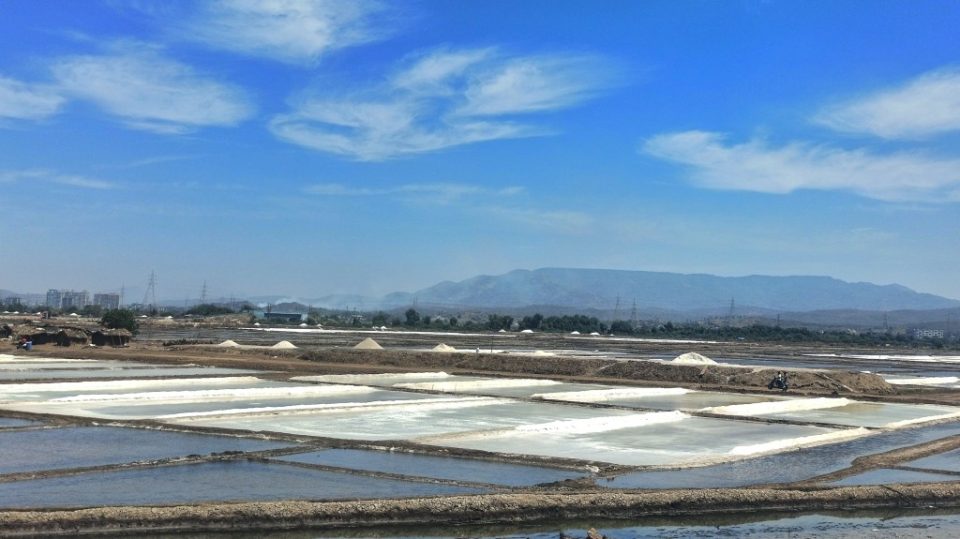
What are salt lands and why are state governments keen to buy them?

Various state governments have evinced interest in buying salt lands at concessional rates, which the Centre currently owns.
About 60,000 acres of salt land is available in several states. Without naming the states, media reports quoted officials as saying the Commerce and Industry Ministry has not taken any final call on their requests. The land is under the administrative control of the ministry.
Also read: NGT levies Rs 10 cr compensation on Kerala for damage to 2 Ramsar wetlands
What are salt lands?
In coastal areas, when a water body dries up, a vast expanse of land surfaces. This land is covered with a layer of sea salt, minerals and other remnants and thus, referred to as salt pan land. Such lands are widely located in the coastal regions.
The larger interest of prospective buyers is in the salt land of Mumbai but it cannot be made available for commercial use. Other salt land parcels are available in coastal areas of Tamil Nadu, Andhra Pradesh and Rajasthan. A drone survey of salt land is also being undertaken find more of them.
Who owns salt lands?
The Centre owns 59,793 acres of salt land across the country via the Salt Department of the Department for Promotion of Industry and Internal Trade (DPIIT). Around 5,000 acres are in Mumbai and its suburbs.
The Salt Commissioner’s Office, headquartered in Jaipur, is under the administrative control of the DPIIT. The functions include promotion of technological development, custody, and superintendence of departmental salt lands and other assets.
Can they be sold to private entities?
The current guidelines do not permit the sale of salt lands to private players. They can only be transferred to the Central government (ministries/departments/PSUs) and state governments (ministries/departments/PSUs). However, there was a plan to formulate a policy for auction of salt land to private entities, media reports said.
Also read: 5 more Indian wetlands added to Ramsar list; Pallikaranai among 3 in TN
In May last year, the DPIIT had sought applications for the empanelment of valuers in Salt Commissioner’s Office (SCO). Land declared surplus to the requirement of SCO would be considered for transfer for public purposes in accordance with the General Financial Rules under intimation to the Ministry of Urban Development, the DPIIT had said in a document inviting application for valuers.
Why are state governments keen to buy them?
The salt lands around coastal areas have appreciated a lot in value and could be a good source of revenue if a state government wants to monetise it. Besides, the state governments are keen on utilising these salt lands to facilitate affordable housing to the people in metropolitan cities like Mumbai.
The Maharashtra government had in the past even set up a committee to study a proposal for building one lakh affordable houses in the salt lands in Bhandup-Kanjumarg belt.
What are the hurdles?
One of the contentious issues involved here is that of the land-sharing formula. The ownership of salt lands has been contested between the Centre and states for more than three decades, with the last suggestion coming from the UPA-I government, to share the land on a 50:50 basis between the state and the Centre.
The current NDA government is reconsidering the issue and is also in favour of opening it up for development. In December 2015, the Union government had even sought views from states on the issue, following a recommendation from the committee of secretaries of the Centre.
Is there a threat to ecology?
Environmentalists have time and again flagged their concerns against opening up these land parcels. They argue that salt pan lands have traditionally been no-development zones and massive open spaces without any construction. Their use by builders, marketed as “affordable housing”, would only destroy the ecological balance that this space maintains for coastlines.
Also read: Pallikarnai lone wetland in Chennai to help prevent floods
As per the Coastal Regulation Zone (CRZ) notification 2011, salt pans are ecologically sensitive areas falling under the category CRZ-1B, where no development activity is allowed, except exploration of natural gas and extraction of salts.
A 2016 report by Mumbai Metropolitan Region Development Authority (MMRDA) also stated that “salt pans are not only important from a livelihood, economy and salt production perspective, but are critically important from the point of view of flood protection as they are shallow depressed areas holding sea water.”


